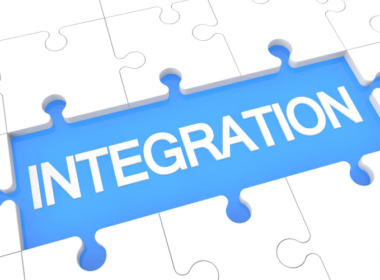More and more, businesses are arriving at a consensus regarding the importance of a suitable IT strategy. While IT strategy must be carefully outlined and documented, a successful plan leaves room for growth and change.
Developing a Documented Vision
The most effective IT roadmaps balance thoroughness with flexibility, allowing organizations to pivot in response to shifts in the business landscape. As new opportunities arise or challenges emerge, the strategy should morph to capitalize on emerging competencies and innovations.
However, core objectives should provide a steady compass for navigating toward overarching goals. With a dynamic plan and adaptable team in place, companies can pursue progress today while preparing for tomorrow.
Interpreting the Technology Architecture
Furnishing a stable IT strategy would elucidate the critical need for re-evaluating the business plan of an organization in the context of evolving IT needs. Companies must align their IT strategies with advanced digital innovation, given the gaps identified as a deterrent to overall growth.
The technology strategic plan has to be based on agile methodologies, implementing test-and-run systems at every coherent phase of improving the IT infrastructure. The pandemic has been an eye-opener in terms of changes.
A major section of global organizations had to re-evaluate their IT strategies, adapting to digital transformation to make operations more enabled and inclusive.
Project Planning and Budgeting
Bankrolling the IT transformation procedure would require a careful allocation of budgeting parameters toward a balanced evolution of the internal IT ecosystem. To make IT touchpoints more intelligible, responsive, and adaptive to optimal UX, the business manager must infer the Key Performance Indicator (KPI) analysis at the earliest.
The identification should be inclusive of the gaps in the current IT plan, and deterrent in materializing the quarter-to-quarter business objectives of the enterprise.
Holistic approach to cybersecurity
In today’s world of ever-evolving digital threats, organizations can no longer rely on technology alone to safeguard critical systems and data. A holistic cybersecurity strategy has become crucial to counter sophisticated attacks and contain the spiraling expenses caused by breaches.
By weaving together technical controls, governance policies, employee education, and cultural change, companies can erect a resilient security fabric capable of detecting risks early and responding effectively.
With cybercrime on track to cost trillions annually, an integrated and proactive approach provides the best defense against adversaries looking to exploit the smallest vulnerability. The time has come to go beyond the reactive tactics of the past and embrace a comprehensive cybersecurity paradigm attuned to new dangers and persistent threats.
Improving IT Resilience through IT Strategy
Investing in adequate IT resilience should be an essential component of a wholesome IT strategy. Organizations are finding it imperative that proper systems are put in place, such that essential IT operations continue unabated despite disruptions in the IT infrastructure.
Overcoming the potential risk of data breaches and systemic failure is integral to validating an organization’s long-term IT plan.
Definition and Importance of IT Strategy
Outlining a Comprehensive Plan
IT managers need to begin with an analysis of strengths and weaknesses in the current IT plan, and how far the organization is falling short of achieving established objectives. A critical overview of the tangent in the intersection of the targeted revenue and the achieved results should be crucial in identifying the areas that need improvement.
Such an analysis should be coherent with the prediction of internal and external forces that have the potential to affect the current IT infrastructure in achieving desired goals. The predictive outcome of the input-output correlation helps to serve a vital purpose in outlining the strategy documentation.
Increasing Productivity and Reduction of Costs
A calculated emphasis must be placed on improving productivity by the implementation of a tangible IT plan. The productive output should be tiered with an estimated reduction of costs, achieved by streamlining IT plans to deduct any existing redundancy in the current system.
Alignment with Business Strategy
The IT manager must coordinate the efforts with the business-side counterpart to identify the businesses, processes, resources, and infrastructure that need to be mobilized to get the IT strategy to achieve desired results.
At all times, principles of IT resilience should be in strict observance, in balancing out the internal development of the IT plan according to tested and cumulative agile methodologies. Maintaining the integrity of technological investments with implementation costs would require careful planning and execution of a well-thought-out initiative.
Key Components of IT Strategy
Vision and Mission
Crucial details must not be left out in formulating the IT mission to achieve the established benchmarks in the current IT plan. A detailed follow-through of IT performance in the suggested quarter analysis should be able to provide an outline for action. The impetus should not be in confusing vision and mission plans, as is a common problem in developing value statements.
A vision should effectively outline what the enterprise intends to achieve in a designed time frame, while the mission should delineate the path to action. A value statement should combine the elements of the business mission, connected with the cost proposition, to make the vision a reality.
Aligning IT governance with business objectives requires a detailed oversight of the touchpoints that need to be escalated to achieve the desired results. The IT executive must be able to fit in a plan that is comprehensive, yet not overflowing. Setting up ideal anchoring points effectively helps to solve this key paradigm.
Basic Components of an IT Plan
Resource allocation is held as a key aspect of the IT plan. Business resources are often limited, so a plan should be outlined to set priorities of allocation. The plan should be flexible, operable, and result-oriented.
Other aspects such as risk management and architecture security should be implemented with adequate response to potential pitfalls if the current strategy underperforms. Therefore, developing a failsafe mechanism would ensure that the enterprise performs at its optimum in achieving the ultimate objective of improving productivity.
Cost Management
When it comes to optimizing IT costs, a key strategy is to align spending with business priorities. By conducting a thoughtful analysis of which IT capabilities are truly mission-critical, organizations can ensure their limited resources are allocated to maximum effect.
Focus first on enabling the technologies, systems, and services that directly impact core operations and strategic initiatives. Does a project directly support revenue growth or operational resilience? Beyond strategic prioritization, there are further gains to be found in improving efficiency.
Streamlining processes to reduce complexity and eliminate redundancies is an important complement to realigning budgets. With a keen eye on business needs and operational efficiency, companies can optimize their IT spending. The result is an agile technology environment that provides the essential foundations for success.
Human capital management
Appropriating proper human capital management is essential in mobilizing IT personnel to operate at optimum efficiency. If an IT consensus is to be achieved, it should not be done by overlooking human capital allocation, as and where necessary.
From remuneration to incentive, the entire process should be outlined in advance to avoid a systemic lag in the face of declined human capital participation.
Hardware and software management
An adequate inventory of hardware should be included to flesh out a comprehensive IT plan. The estimate should necessarily involve an overview of IT infrastructure improvement, within the aegis of applied cost management strategies. Similarly, the software ecosystem should be evolved at par with human capital allocation and hardware improvement objectives.
Vendor management
Proper vendor management is essential to overcome potential supply chain disruptions in achieving the requisite IT objectives. Vendor management involves several key responsibilities, including selecting vendors, negotiating contracts, and setting up a suitable inclusive plan at par with the broader objectives of the organization.
Creating an IT Strategy
Developing a Comprehensive Plan
Considering all stakeholders of a potential IT strategy is absolutely essential. To put the plan to action where it matters, must involve the ideation of the core business principles coherent with the needs of customers, employees, and partners.
Formulating the plan may take unexpected turns based on an iterative IT strategy, but the iteration should be well-adjusted within the given framework. A consistent overview of the plan according to outstanding business objectives will help to obtain the results.
Collaboration with business-side counterparts
An IT strategy essentially overcomes challenges by identifying the correlation between the business side and the technological aspect of the plan. Achieving this coherence would require executives to adhere to a common groundwork of positive collaboration. Any difference of opinion must be discussed and resolved with an overview that is best for the long-term objectives of the enterprise.
Development of short and long-term objectives
One of the benchmarks of the agile application of an effective IT strategy is to set up a series of short-term objectives, leading to a compact long-term plan. Facilitating a suitable predictive analysis of the budget projection can go a long way in identifying key areas where the short-term objectives should be implemented. This should be followed up by technical appropriation and personnel oversight, to finally achieve the long-term paradigm.
Development of Flexible Strategies
Watertight strategies often fail to administer proper resource allocation to viable changes in market forces that can influence the IT plan. This should be avoided, with ample space for flexible oversight placed on implementing the strategy to its full potential. New technological advances, including those in Artificial Intelligence, Cloud Computing, and computational analytics should be well-adjusted for in the broader picture of the IT setup.
Implementing an IT Strategy
Developing a Tactical Overview
A tactical overview of the IT plan must be in place to achieve desired objectives. Formulation of the tactical plan should elucidate the terms and conditions upon which the IT adjustments need to be made. Tactical oversight should be able to have a crucial role in guiding the day-to-day decision-making process so that the required objective is achieved.
Proper Gap Assessment
At every stage of the strategy implementation, proper gap assessment methods must be in place to identify the progress of the IT plan at par with the desired objectives. Established objectives must be compartmentalized in achievable day-to-day silos so that the outcome is brought about without unnecessary delay. The results should speak for themselves, and the IT plan must follow up with the initial assessment of established objectives.
Reassessment and Redevelopment
The IT manager must place ample attention towards a continuous reassessment of the plan in progress. This should be crucial for understanding where the plan may and does fall behind, and where the efforts must be scaled down for a more viable allocation of available resources.








